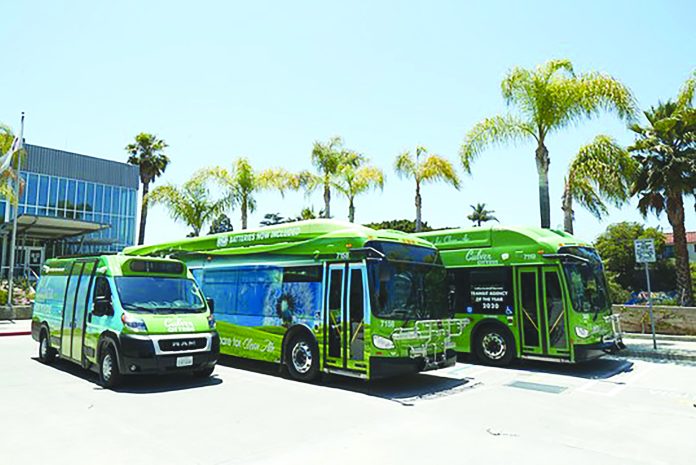
The Federal Transportation Administration (FTA) announced in early June that the Culver City Transportation Department – Culver City’s mobility service provider – will receive $645,750 through the FTA Route Planning Restoration Program. Culver City was one of 50 transit agencies in the country and one of nine in California to receive part of the $25 million federal grant, which aims to restore and improve service that has been affected by the COVID-19 pandemic. “It’s an honor to be one of a small number of transit agencies in the country to receive this federal funding,” said Culver City Mayor Dr. Daniel Lee. “This award is a validation of the great work Culver City is doing to expand and improve mobility options through MOVE Culver City, vehicle electrification, and using emerging technologies to deliver mobility as a service.” Culver City will use these grant funds to conduct a fullscale Comprehensive Service Analysis (CSA), which will analyze the City’s transit system to support the Transportation Department in developing a roadmap for a sustainable system that can achieve long-term growth. As part of the analysis process, the CSA will include surveys of transit riders and the community as well as stakeholder outreach via targeted interviews. “This grant will allow the City to continue to allocate resources that prioritize user experience and convenience,” said Culver City Chief Transportation Officer Rolando Cruz. “The results of the Comprehensive Service Analysis will inform the City’s decision-making process as we look to expand the delivery of efficient, environmentally friendly and affordable mobility options.” In April 2022, an average of 6,635 people rode CityBus every day, a 33% increase from April 2021. In the same month, CityBus earned an on-time performance rate of 91%. As public demand for Culver City’s robust public transit system increases, the City will use the CSA to maintain efficiency, expand routes and prepare for increasing ridership. The CSA will also help the Transportation Department meet its goal of zero carbon emissions from CityBus by 2028. Federal funding was made available through the American Rescue Plan Act (ARPA) and doesn’t require matching funds from Culver City. Beginning in spring 2023, the City will retain a contractor to conduct the analysis, which is anticipated to begin in winter 2024. More information on the grant award announcement is available on the FTA website. To view all recipients of the FTA Route Planning Restoration Program grant, visit the funding selection page. Culver CityBus is committed to delivering safe, reliable transportation. The free NextCCBus App provides up-to-date information on Culver City’s mobility service. The app is available on a mobile device at the Google Play app store and Apple App Store. About Culver CityBus Recognized in 2020, as California Transit Association’s Agency of the Year, Culver CityBus is the second oldest municipally owned bus line in the State of California. On March 3, 1928, service was implemented and since its establishment, passengers on Culver CityBus have enjoyed safe, reliable, convenient, and friendly public transportation service. The Culver CityBus fleet is currently comprised of 50 compressed natural gas (CNG) buses, four battery electric buses, and three electric minibuses. Culver CityBus has committed to implementing a 100% zeroemission fleet by 2028 to meet its commitment to the Transportation Electrifi cation Partnership (TEP) and to comply with the Innovative Clean Transit (ICT) regulation enacted by the California Air Resources Board (CARB). Culver CityBus operates seven regular routes and one BRT route, serving approximately 5 million passengers annually with a 33-square-mile service area, which includes the Westside communities of Venice, Westchester, Westwood, West Los Angeles, Palms, Marina Del Rey, Rancho Park, Mar Vista, Century City, Playa Vista.












